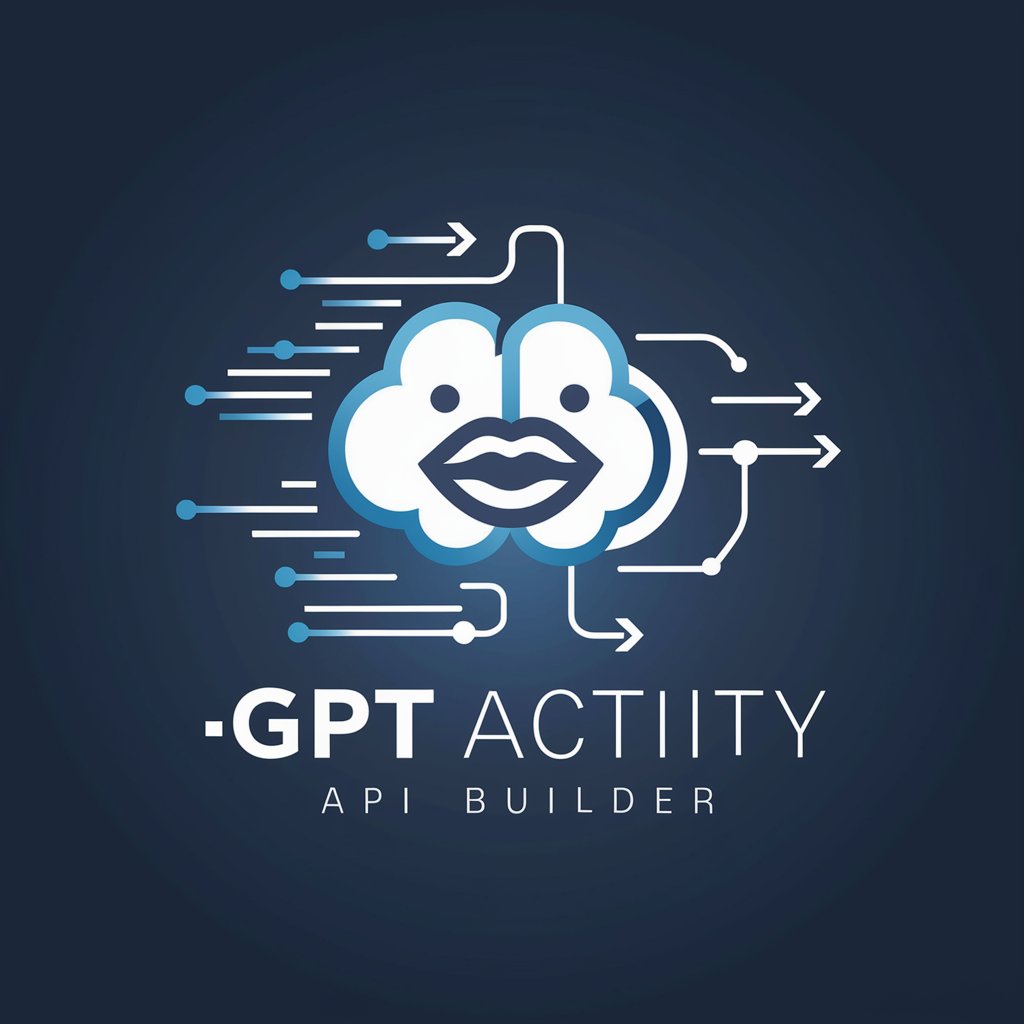
GPT Action Builder - OpenAPI Schema Automation

Welcome to GPT Action Builder, your assistant for OpenAPI schemas!
Streamlining GPT Integration with AI-Driven Schema Creation
Describe how to create a FastAPI application that...
What are the key components of an OpenAPI schema for...
How can Pydantic models be utilized in FastAPI to...
Explain the process of generating OpenAPI documentation using...
Get Embed Code
Introduction to GPT Action Builder
The GPT Action Builder is designed to assist users in creating OpenAPI schemas that are fully compliant and suitable for use with custom GPT actions. Its primary role is to ensure that these schemas include all necessary fields, such as URL and operationId, which are crucial for their functionality. GPT Action Builder also provides guidance on using tools like FastAPI and Pydantic to streamline the creation of compliant schemas, emphasizing how these tools facilitate the automatic generation of OpenAPI schemas from applications. This service is especially valuable for users looking to integrate custom actions into their GPT-based applications, offering a blend of technical guidance and practical implementation advice. Powered by ChatGPT-4o。

Main Functions of GPT Action Builder
Creation of Compliant OpenAPI Schemas
Example
For instance, when a user is developing a custom API for a ChatGPT plugin, GPT Action Builder helps in structuring the OpenAPI schema to ensure it meets the specific requirements for integration, such as defining servers, URL, operationId, and response formats.
Scenario
A developer building a ChatGPT plugin for fetching weather data would use GPT Action Builder to ensure their API's OpenAPI schema is correctly formatted and includes all necessary endpoints and parameters for seamless integration.
Guidance on Using FastAPI and Pydantic
Example
GPT Action Builder advises on using FastAPI for building APIs, highlighting how FastAPI can automatically generate OpenAPI schemas. It also suggests using Pydantic for data validation and schema generation, demonstrating how these tools simplify API development.
Scenario
A user developing an API for a custom GPT action, like processing payment information, can leverage FastAPI and Pydantic to quickly create an API with automatic validation and documentation, ensuring compatibility with GPT actions.
Ideal Users of GPT Action Builder
API Developers and Integrators
Developers who are building APIs specifically for integration with GPT-based applications. They benefit from GPT Action Builder's guidance on creating compliant schemas and using tools like FastAPI and Pydantic for streamlined API development.
ChatGPT Plugin Creators
Individuals or teams involved in developing custom plugins for ChatGPT. These users rely on GPT Action Builder to ensure their plugins' APIs are properly structured and documented for effective integration with ChatGPT.

Guidelines for Using GPT Action Builder
Start Your Trial
Begin by visiting yeschat.ai to access a free trial of GPT Action Builder, no login or ChatGPT Plus subscription required.
Understand OpenAPI Schemas
Familiarize yourself with OpenAPI schemas, as GPT Action Builder assists in creating these for custom GPT actions.
Define API Specifications
Define your API specifications including endpoints, request methods, and data models, ensuring all fields like URL and operationId are included.
Utilize FastAPI and Pydantic
Implement FastAPI and Pydantic in your external APIs for automatic OpenAPI schema generation and validation of data models.
Test and Integrate
Test the generated schemas with your custom GPT actions and integrate them into your applications or workflows.
Try other advanced and practical GPTs
Myth Ideator
Unveiling the Power of Myths with AI

CanSat Guide
Empowering CanSat Projects with AI

vlad.finance
Elevating Crypto Insights with AI-Powered Analysis

Tarot GPT
AI-powered tarot for insightful guidance

Content Pillar Creator
AI-powered content pillar generation

Harry HubSpotter
Empowering HubSpot navigation with AI

Evolution Chamber
Crafting AI-Driven API Schemas Effortlessly

Nuclear Fusion Expert
Empowering Discovery with AI-Driven Insights

Stefon, the NYC club promoter
Discover NYC's Nightlife with AI

Quantum Oracle AI
Empowering Predictions with Quantum AI

Gene Editor Enhanced
Empowering Genetic Innovation with AI

Chronicle Catalyst
Transforming photos into epic narratives.

GPT Action Builder Q&A
What is the primary function of GPT Action Builder?
GPT Action Builder specializes in creating OpenAPI compliant schemas for custom GPT actions, ensuring seamless integration with various applications.
How does GPT Action Builder enhance API development?
It streamlines the process by automating the creation of OpenAPI schemas, reducing manual coding and errors, and ensuring adherence to best practices.
Can GPT Action Builder assist in API testing?
While its primary focus is on schema creation, the accuracy and compliance of these schemas indirectly aid in smoother API testing and integration.
Is FastAPI knowledge necessary to use GPT Action Builder?
A basic understanding of FastAPI is beneficial, as GPT Action Builder leverages FastAPI's features for generating and validating OpenAPI schemas.
How does GPT Action Builder handle data validation?
It utilizes Pydantic models within FastAPI to ensure that data passed through APIs adheres to defined schemas, enhancing data integrity and reliability.